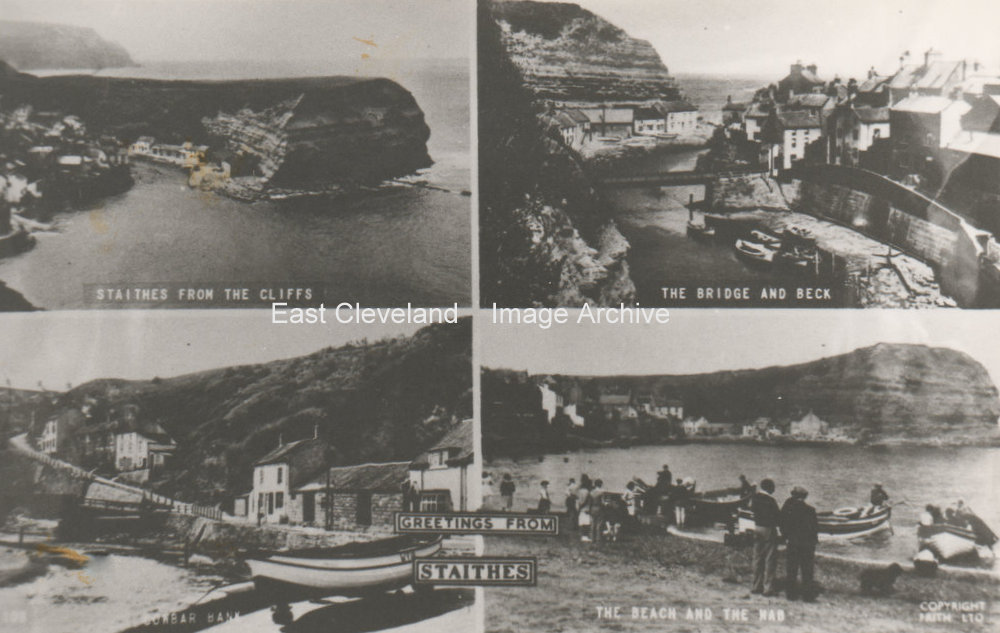
This lovely postcard says it all with some lovely shots of Staithes, a busy scene on the beach and it looks as though the boats have come in after a busy day fishing.
|
|
||
 This lovely postcard says it all with some lovely shots of Staithes, a busy scene on the beach and it looks as though the boats have come in after a busy day fishing. 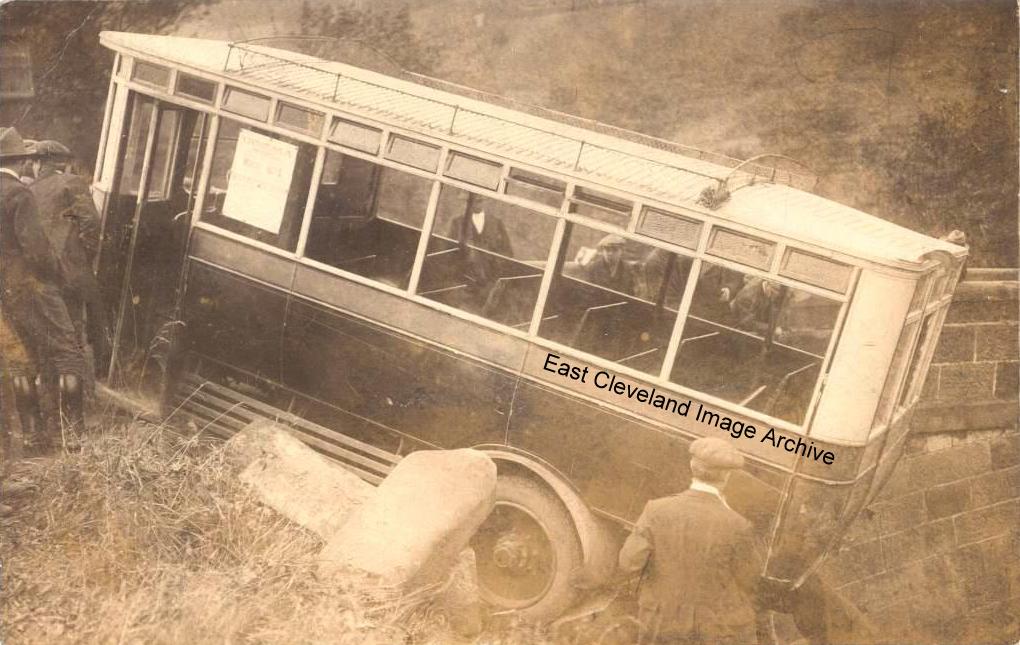 This photograph of a bus that crashed through the bridge at the bottom of Loftus Bank is featured in another image on the site. Howard Wilson’s grandfather worked for Garbutt Bros and may have been called out to the rescue. Craig Colledge assisted with: ” I think that you will find that this was my grandad’s bus, George Colledge. I have various photographs at different angles of the accident blown up in frames on the wall. As I remember being told as a youngster it was at the bottom of Brotton. Grandad always said he has never seen so much raw eggs, live chickens and other animals thrown a cross the inside of a bus. (In them days you would take anything on board to market). The reason for the accident was that the steering failed. Or that is what he told me.” Craig also told the Archive: “The poster on the near side window which isn’t very clear was promoting Hinderwell Cinama. Grandad had the contract from Guisborough to Hinderwell at the time.” Image and details courtesy of Howard Wilson, thanks to Craig Colledge for the updates. 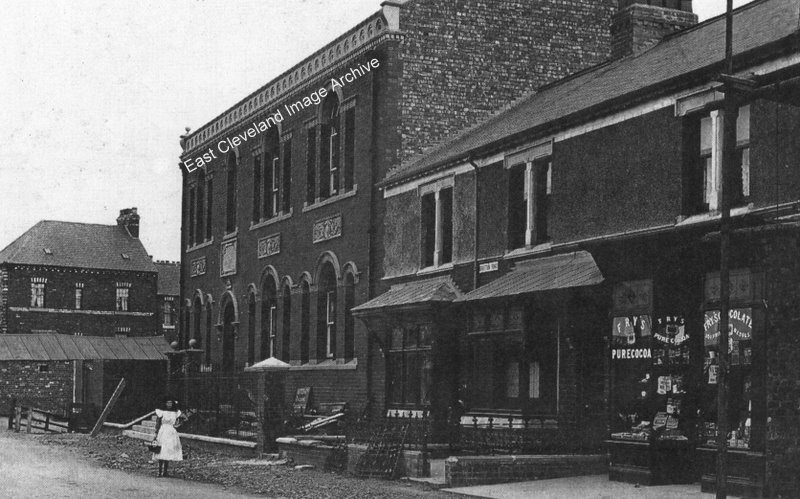 Carlin How Workingman’s Club and shop (long gone) on Brotton Road. Derick Pearson advised: “This photograph is I believe 1911 to 1912. The railings and oping stones still not complete indicating job not quite finished. Hence the guess at the date as the club opened in 1911. Also visible are Blaylock’s house, shop and outbuildings on bottom end of Maynard Street, these was taken down in the 1960s to make the bend easier for the larger buses.” Roger Barwick advises us: ”My grandad Harold Bowling was probably the first steward at Carlin How club. He moved from the old soldiers club in Hemsworth in West Yorkshire when my Mam was 1-2 years old and she was born in 1910, he eventually became the landlord of The Maynard Arms but I am not sure when he took the pub over. Quite a number of people may remember my Uncle Harold or Tim as he was known who joined the Police and was awarded the BEM for work he did when he was stationed at Staithes.” Image courtesy of Carlin How Community Centre and others, thanks to Derick Pearson, Roger Barwick and Brian Stonehouse for the updates. 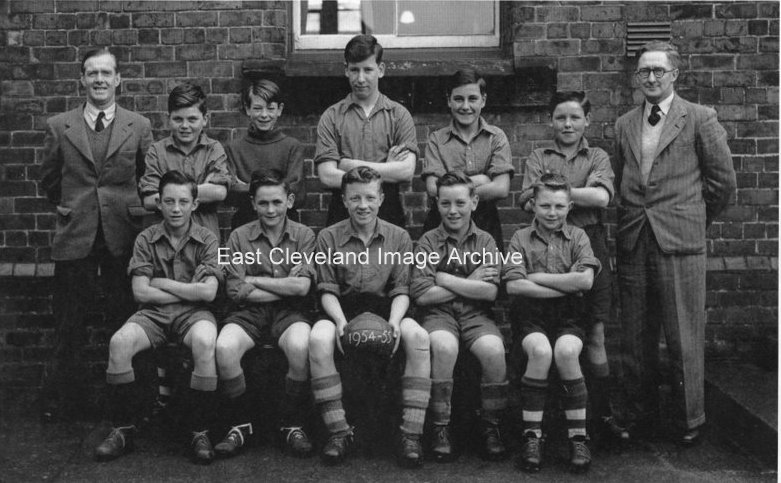 Lingdale School football team 1954 – 55. Image and names courtesy of Derick Pearson. 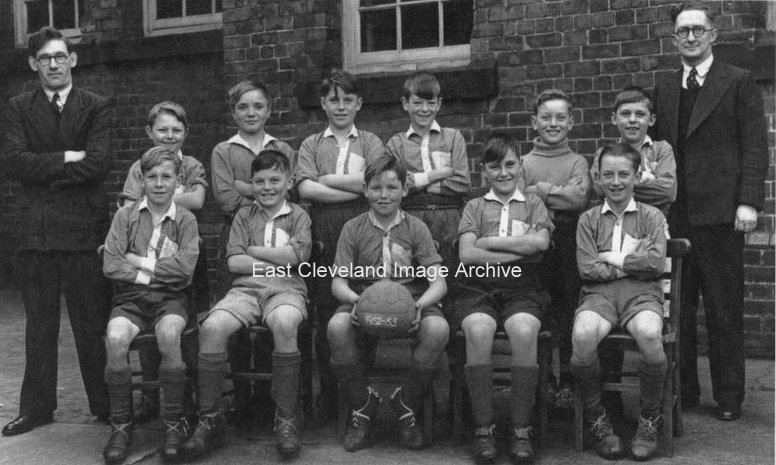 Lingdale School football team 1952-53. Image and names courtesy of Derick Pearson. 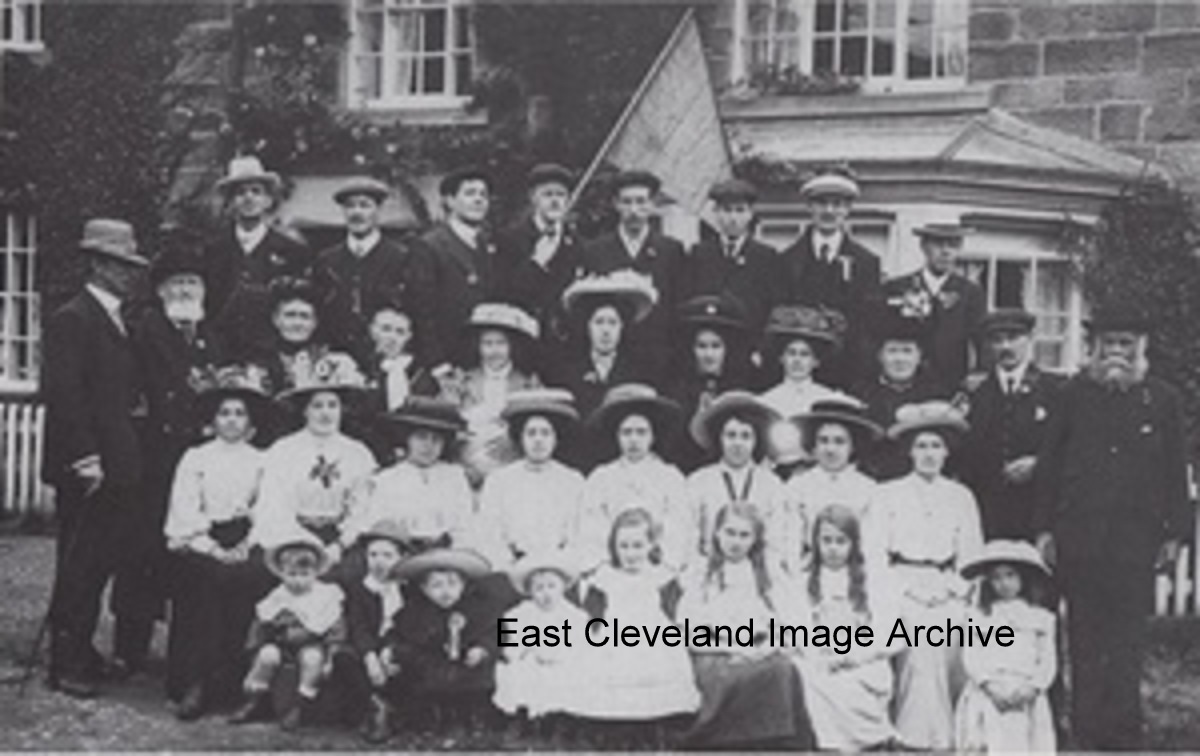 A nice photograph of a group gathering; in 1910 in the Market Place, Loftus. However it is known for certain that there are at least 5 people from Carlin How on the photograph, so it may have been a mixed Chapel or church outing. Back row: Leslie Nicholson (magistrate), Fred Nicholson, ??, G. T. Goodwill. Third row: ??, ??, ??, ??, ??, ??, Mrs Goodwill, ??, Margaret Elizabeth Hall (nee Ord), ??, Charles Hall. Second row: ??, ??, ??, ??, Clara Nicholson (nee Hall), ??, ??, ??. Front row: Lesley Nicholson. Neil Suckling confirmed: “Three of the young women are my great aunts; Mary Suckling (Murray), Hannah Suckling and Lydia Suckling (nee Donnelly) and possibly my grandad Andrew Suckling.” George Tremain added: “The man first on the right is Charles Hall of Front Street, Carlin How. His wife Margaret Elizabeth Ord is third from the left on the same row. Second from the left on the back row is Fred Nicholson, his wife Clara (Hall) Nicholson is fourth from the right on the second row. Their son Lesley is first on the left on the front row.” Whilst Tony Nicholson advised: “Yes, Fred Nicholson is on the back row at the far left, with a large white hat.” Rita Jury asked: “Hi I’m interested in the name- nee Donnely – could the spelling have changed my mother was Donnelly of Coronation Street born in 1922 – my grandmothers maiden name was Astle.” Image courtesy of Carlin How Community Centre, names courtesy of a CD compiled by Derick Pearson; thanks to Neil Suckling, George Tremain and Tony Nicholson for the updates on this photograph. 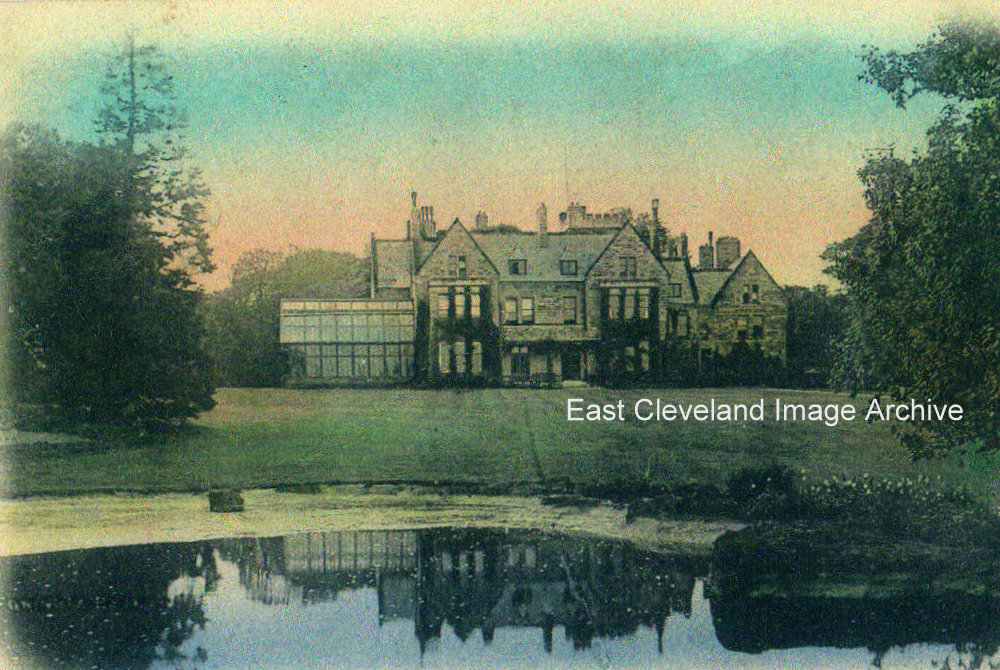 A beautiful building once owned by the Palmer family, now owned by a brewery and serves as a hotel. The pets graveyard is a place children love to visit to see where the dogs, ducks and other pets were buried. This view of Grinkle Park, taken probably during the times before it became the sporting hotel it is now; shows the glazed sun lounge to good effect. Image courtesy of John G. Hannah.
Another photograph relating to the dismantling of Huntcliffe Mines after the closure in 1906. This picture is of the dismantling of the tipping gantry. Maurice Dower tells us: “The man second left on the top of the timber gantry is my great grand-father James Herbert Dower.” Grateful thanks to Simon Chapman for the information and Maurice Dower for the update. 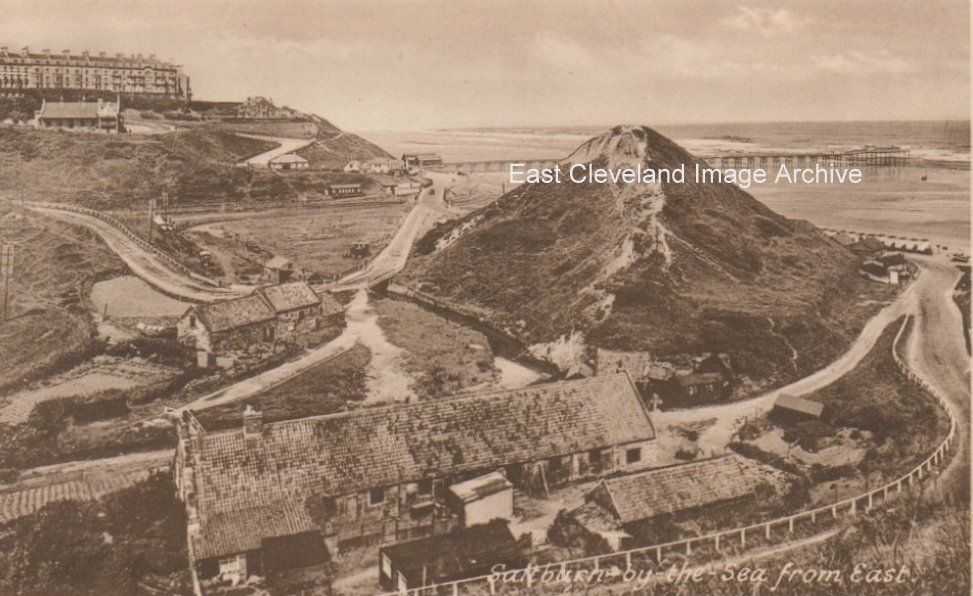 Saltburn Mill House in the foreground still stands, much modernised, to this day, as Callum Duff advises: ”Saltburn Mill was actually situated a few yards up Saltburn Gill to the south of this view. Its millrace ran the length of the valley either following the current footpath or running alongside it. It was demolished around 1920.”. The small buildings behind it are now gone – replaced by the sewage treatment plant. Cat Nab (so named because it looks like a crouching cat) shows the paths from the boot marks of the boots of adventurous Victorians, eager to try the air – the scars are much deeper these days and beyond recovery. Anne Watson adds: “I have an almost identical postcard, with a 1.5d George V stamp. Our family spent many weekends and holidays there, 1930s to 1950s, as my great uncle owned the hut shown under the nab – called Nestleton Cot. The building in the foreground was a farm and as kids around 1950 we used to help the farmer’s dog bring cows in for milking. I think his name was Smith. The track to the field ran between the farm and the beck.” Peter Appleton advises: “The long house in the foreground was, almost certainly, the alum house for the alum works at Selby Hagg, Skelton. The first period of operation, from about 1617 to, perhaps, 1630 saw the alum house located in the quarry (which is located ESE from Hagg Farm and ENE from the Asda roundabout). The alum operation was resumed by Edward Trotter of Skelton Castle, on behalf of his father-in-law, Sir John Lowther, in 1670. In letters written to Sir John, it is explained that the laying of the troughs has begun and will be a very costly exercise. Those troughs, a wooden conduit, ran the entire length of Saltburn Gill, from the quarries to the long house at Cat Nab. That’s almost 2km in length! They operated for about 20-25 years. When John Hall Stevenson resurrected the alum works in 1765, the quarries, troughs and alum house were all refurbished. It is highly likely that the stone walls and probably some of the roof beams will have originally been part of the alum house.“ Many thanks to Callum Duff, Anne Watson and Peter Appleton for the updates. 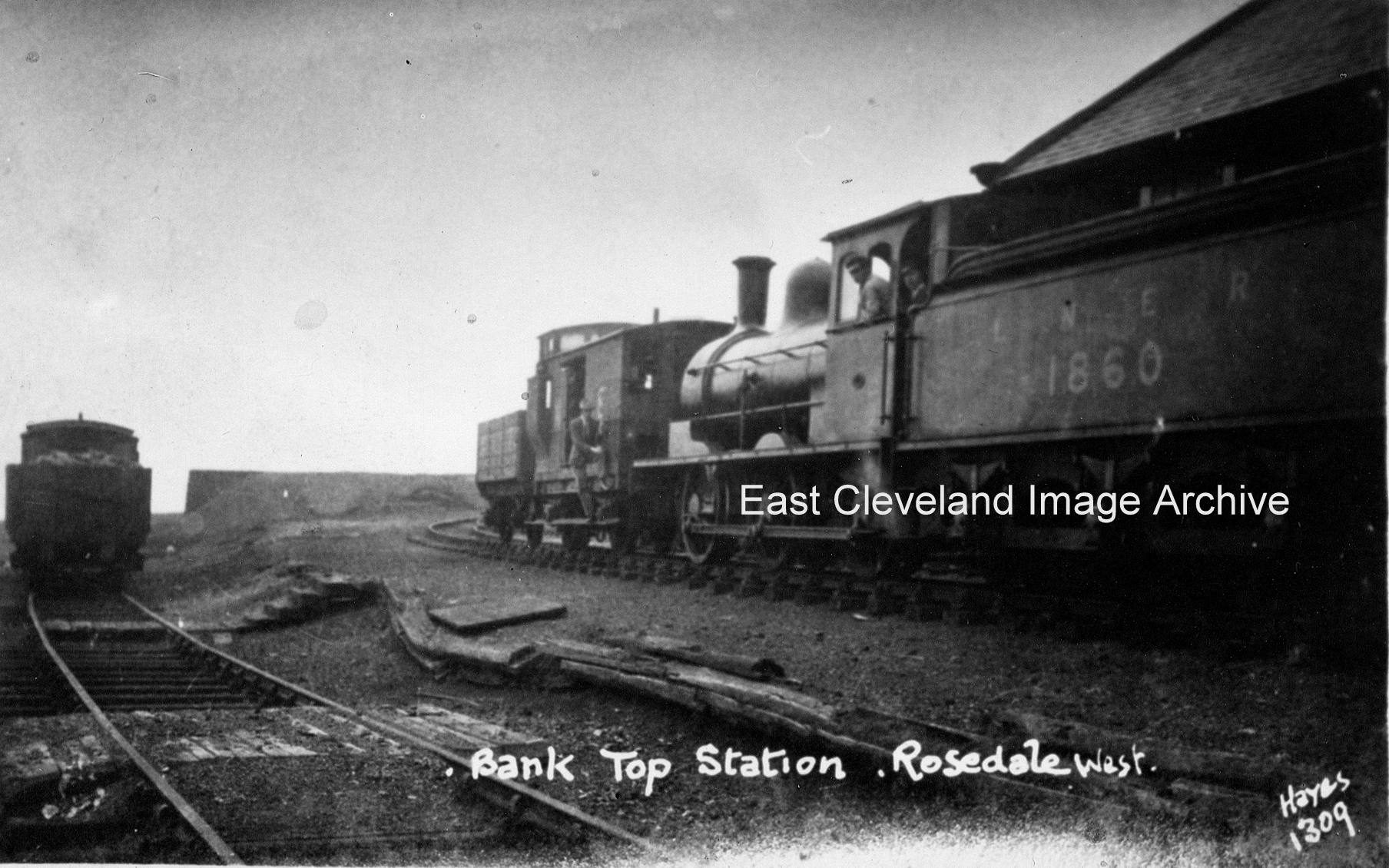 Rosedale West is where this station is and Robert Goundry assisted with: “Rosedale West was a junction where the line from Ingleby Incline divided to go to the East and West sides of Rosedale. The engine shed for the line was there, but as there were no (official) passenger trains it wasn’t a passenger station. The locomotives were NER Class P (LNER J24) and had tender cabs to help deal with the inclement weather across the moors.” Image (from a William Hayes postcard) courtesy of Cleveland Ironstone Mining Museum and thanks to Robert Goundry for the update. |
||
Recent Comments